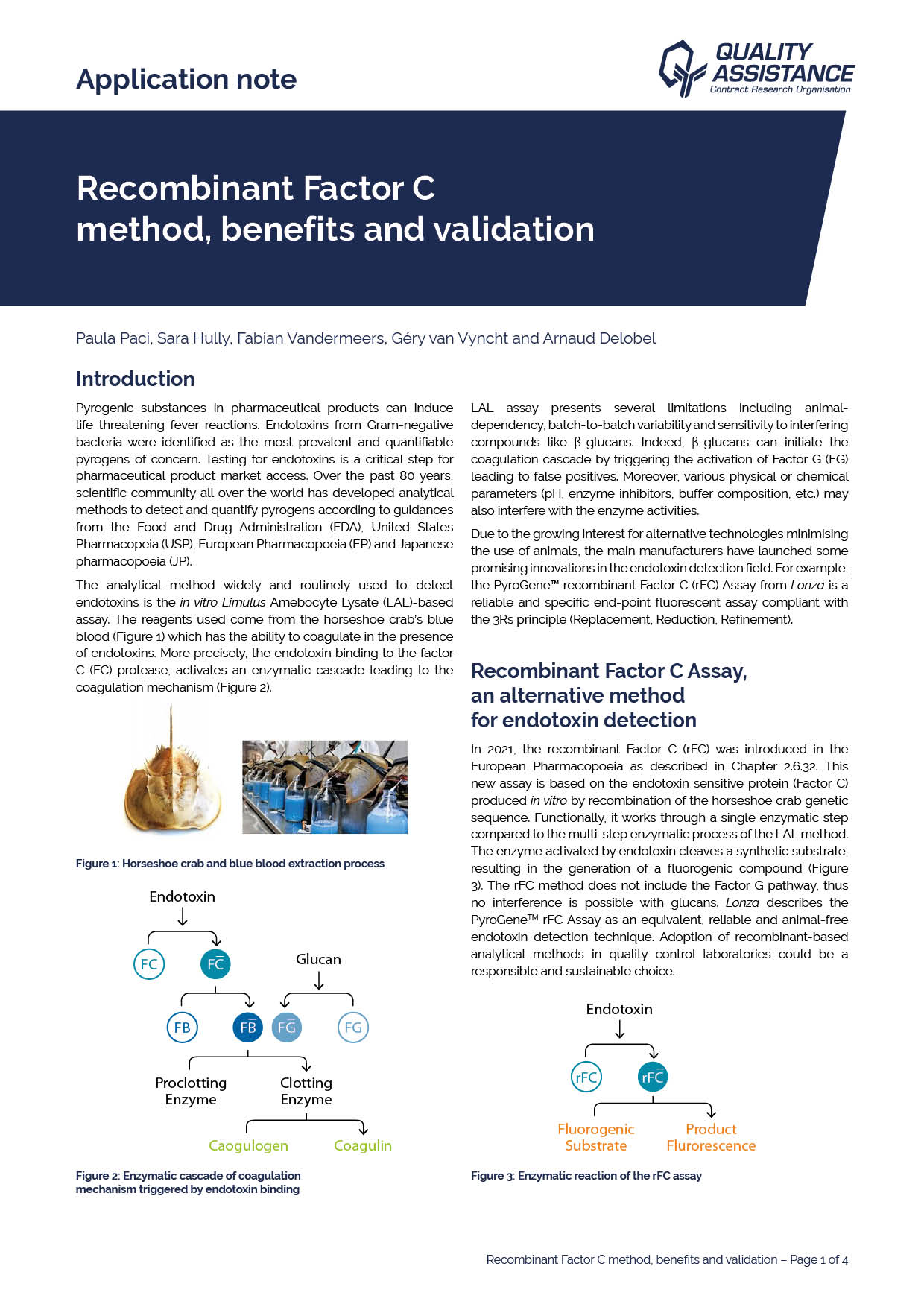Recombinant Factor C method, benefits and validation

Pyrogenic substances in pharmaceutical products can induce life threatening fever reactions. Endotoxins from Gram-negative bacteria were identified as the most prevalent and quantifiable pyrogens of concern. Testing for endotoxins is a critical step for pharmaceutical product market access. Over the past 80 years, scientific community all over the world has developed analytical methods to detect and quantify pyrogens according to guidances from the Food and Drug Administration (FDA), United States Pharmacopeia (USP), European Pharmacopoeia (EP) and Japanese pharmacopoeia (JP).
The analytical method widely and routinely used to detect endotoxins is the in vitro Limulus Amebocyte Lysate (LAL)-based assay. The reagents used come from the horseshoe crab’s blue blood which has the ability to coagulate in the presence of endotoxins. More precisely, the endotoxin binding to the factor C (FC) protease, activates an enzymatic cascade leading to the coagulation mechanism.
LAL assay presents several limitations including animal-dependency, batch-to-batch variability and sensitivity to interfering compounds like β-glucans. Indeed, β-glucans can initiate the coagulation cascade by triggering the activation of Factor G (FG) leading to false positives. Moreover, various physical or chemical parameters (pH, enzyme inhibitors, buffer composition, etc.) may also interfere with the enzyme activities.
Due to the growing interest for alternative technologies minimising the use of animals, the main manufacturers have launched some promising innovations in the endotoxin detection field. For example, the PyroGene™ recombinant Factor C (rFC) Assay from Lonza is a reliable and specific end-point fluorescent assay compliant with the 3Rs principle (Replacement, Reduction, Refinement).
As a Contract Research Organisation at the forefront of analytical sciences, Quality Assistance is constantly investing in the latest technologies and equipment to provide the pharmaceutical industry with all cutting-edge services required by the EMA and FDA
Since 2022, Quality Assistance has proposed the rFC assay as an alternative method for endotoxin detection in accordance with the European Pharmacopoeia. rFC can be used for routine analyses in a GMP environment after product-specific validation for the European applications. If the product targets the US market, the test should also be validated according to USP <1225>, as presented in this application note.